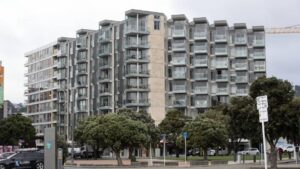The Government announced a proposal for Urban Planning during the week. Here is an article which describes what is being proposed:
https://www.stuff.co.nz/national/politics/300064493/government-moves-to-end-minimum-carpark-requirements-and-remove-low-heightlimits-in-bid-to-increase-dense-housing

Ivan Thompson, who worked for 2 centuries as a City Planner and who feels safe to express his own opinions now he has retired, sent me this analysis of the National Policy Statement.
Christchurch residents should be wary of the Government’s National Policy Statement on Urban Development that will come into effect on 20 August.
The NPS requires Regional and District Councils in large urban centres like Christchurch to hike up residential densities in their areas in order to increase housing supply. Councils in ‘Tier 1 areas’ are required to effectively abolish height limits in their central areas, have a minimum of six storeys around major metropolitan centres and intensify other parts of the City in suburban areas and abolish minimum on-site parking requirements.
Intensification is not new to Christchurch. The Canterbury Regional Policy Statement and Christchurch District Plan enable medium residential densities in selected areas, and higher densities in the central city. Most recent analyses by the City Council and the Greater Christchurch Partnership on urban development capacity shows that there is sufficient capacity in existing zoned areas to provide for projected housing and business demand over the next thirty years. However, the NPS requires Councils to provide for even more intensification, around smaller retailing centres than currently provided for.
As a general planning principle, placing higher densities around centres and transport interchanges, and integration with public transport generally, makes good sense. Such an approach has the potential to reduce the length and number of car borne trips, encourage cycling and walking, and can encourage the use of public transport. It also provides support for district and local centres and the CBD. In large cities, residential property near, say a railway station, is sought after. But land use and transport integration is only one segment of strategic urban planning, not the be-all and end-all.
It is understandable that the Government is keen to enable more houses to be built, particularly affordable housing. The most effective and efficient way of delivering this much housing is through urban consolidation and some carefully planned greenfield areas, including good transport and land use integration. However, such development needs have greater regard to environmental quality and urban design than afforded in this policy statement.
Intensification comes at a cost and inevitably result in ‘trade-ffs’. These costs and trade-offs are either downplayed or ignored altogether by the NPS. For example, any effects on amenity values are largely discarded as being of minor importance or part of an unwanted NIMBY syndrome. The document limits the consideration of the potential effects of intensification on other important planning considerations such as open space, community infrastructure, and traffic impacts.
Change in urban communities is inevitable and often occurs organically with minimum social or environmental disruption, depending on the rate of growth. Good urban planning involves managing change at a rate and scale that adds to housing choice yet delivers quality outcomes for communities, especially when neighbourhoods are ‘up zoned’ where density and urban design need to be aligned.
Sadly, what is emerging through this policy statement is often referred to as ‘town cramming’ – the intensification of towns and neighbourhoods with scant regard to the effects. This is being imposed by central government with a myopic focus on housing numbers. Worse, the NPS has taken a template that could be suited to the planning of a growing Sydney, Melbourne and probably Auckland, not necessarily Christchurch.
The shortage of affordable housing is less to do with the RMA and more to do with things like market failure in the land market, local government funding constraints and issues in the construction sector. We need only look at the Christchurch central city for examples of this. There’s an abundance of vacant land used for carparks or sitting idle. There are sites in the inner suburbs like the former Orion site and former sale yards both ideally situated for housing but nothing has happened. These are not situations brought about by town planning.
No doubt the Government will say that the NPS is a response to local government’s call for greater guidance on urban development. But what has been imparted on local government isn’t guidance: it is the imposition of a rigid template divorced from any sense of local context, and silent on how the policies will be implemented. It is not a good model as to how local-central government ‘partnerships’ should be working.
Leave a Reply